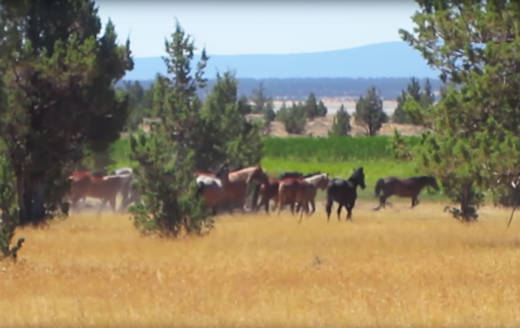Wild horses are an iconic part of America’s Western landscape, just like the cowboys who round them up. It’s a scene on display this month in the remote and rugged landscape of Modoc County’s Devil’s Garden Plateau, in far northeastern California.
But the fate of the horses caught in that roundup has sparked a lawsuit, filed by two animal advocacy organizations — the Animal Legal Defense Fund and the American Wild Horse Campaign.
To understand the lawsuit, it helps to understand why the U.S. Forest Service is conducting the roundup in the first place.
Biologists say the wild horse territory on the plateau can sustain 400 wild horses, but the population has exploded to 4,000. And that’s causing problems for the horses — if faced with a harsh winter, they may starve. Also of concern are other wildlife grazers, like the indigenous pronghorn antelope. And finally, the health of creeks and streams is heavily impacted by these robust, unmanaged wild horse herds. So, for the overall health of the horses, the wildlife and the environment, there is general consensus that reducing the number of horses is essential. And better management of them is needed going forward.
“We have 10 to 20 times the amount of horses on this land that the land can sustain while also sustaining the wildlife, fish and other aquatic resources … and the economic driver of this county, which is cattle grazing,” said U.S. Forest Service spokesman Ken Sandusky.
